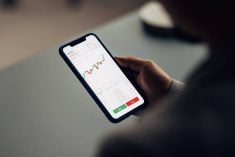Many things perceived as impossible are indeed possible — but some aren’t. I just finished reading a book about many of humanity’s greatest discoveries. A theme throughout was how these potential inventions were scoffed at, yet through persistence inventors accomplished the impossible.
One of the most satisfying aspects of my agricultural career was proving the skeptics wrong. Growing corn and soybeans in Western Canada was perceived to be impossible until we made it possible. Two decades ago, during my first meeting with Husky to discuss canola-based biodiesel, I pivoted the discussion to corn for its new ethanol plant coming online in Minnedosa. They laughed it off as impossible with the limited acreage and difficulty growing corn. A few years and a couple of trials later, the plant converted to corn.
Read Also

Gentle treatments for pain in the neck
Heading toward year-end, people unknowingly tense up against the cold and busyness, causing neck pain that can often be treated with appropriate support and gentle mobility, athletic therapist Kathlyn Hossack says.
One market myth is that it’s impossible to beat the market. This concept is taught in business school. I fondly recall when my 19-year-old son came home one day and asked, “You know what they taught us in finance today?”
“Nope, what?”
“They taught us that you can’t beat the market.”
So, I took a sheet of paper out of a file where I track my annual performance compared to market benchmarks. He scanned the numbers and observed, “Oh, my dad’s not a dummy!” High praise from a teenager! He is now a professional portfolio manager, nicely beating market benchmarks.
There is, however, an aspect touted as possible that is impossible. Timing the market — when to buy and when to sell — is a widely discussed impossible task. Attempts to time the market ravage portfolio performance and are the main reason most investors only derive one-third to one-half of overall market performance. It doesn’t matter whether one invests directly in stocks, mutual funds or exchange-traded funds, most investors succumb to attempting this impossible task. Many newsletters, newspapers, YouTube channels, social media posts et cetera purport to be able to help investors navigate intricate market timing strategies, exploiting fears of market losses. They don’t work. Period.
The damage is profound. Over a 30-year period, from 1993 to 2022, $10,000 invested in the S&P 500 would have become $158,434. Missing just the 10 best days in the 30-year period would have resulted in less than half the outcome, an ending value of $72,584. Missing the best 20 days would have resulted in an outcome of $42,601 and missing the best 30 days (less than 0.5 per cent of days) would have resulted in an outcome of just $26,925. (Source: Hartford Funds.) Which result would you sooner have?
These differences seem astounding, but it is because of the compounding nature of returns. In 2023, while there were no huge movement days of five per cent or more, almost all the gains for the year were derived over a short month-and-a-half period from late October to mid-December. My last article noted that market sentiment was the worst in late October, meaning many investors were riding the pines for that incredible rally.
Another clear example was the day the first COVID vaccine was announced: my portfolios rose about eight per cent. Many investors were also riding the pines through the incredible COVID recovery rally. How could anyone possibly predict both the date of the announcement, and the magnitude of the market reaction?
Another astounding fact is that three-quarters of those huge “up” days come either during a bear market or in the first two months of recovery from a bear market. If you manage to get timing right once and miss a big part of a bear market, you must again get it right to buy back at the very bottom. And you must do this market timing task repeatedly, because during most years there is at least one 10 per cent or larger pullback.
When you make a commitment to invest in stocks, you must also accept the inherent volatility. If so, the results are incredible and far superior to other options. Since 1928 the S&P 500 has averaged 9.8 per cent annually, with a range of -43.8 to +52.6. Bonds returned 4.6 per cent with a range of -17.8 to +32.8, and cash returned 3.3 per cent with a range of zero to +14 per cent. Using the Rule of 72, we can quickly calculate that over 30 years, $10,000 becomes approximately $168,000 with stocks, $38,000 with bonds and $28,000 with cash. Is the volatility worth it? If calculated after inflation and taxes, the results would be even more dramatic.
However, those results or better will only accrue to those who accept volatility and learn to distinguish between what’s possible and what’s impossible. Security selection, not market timing, is the key to superior results.
















